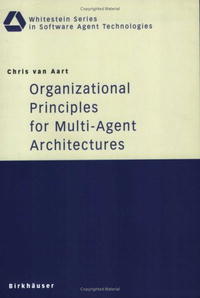The general question addressed in this book "How can human organizational principles be used for multi-agent architectures?" is answered by an exploration of the possibilities to design multi-agent systems as artificial organizations. Key topics of this book: - a framework for multi-agent system design, based on human organizational notions and principles for distributed intelligent systems design - "Coordination mechanisms" in the form of "Problem Solving Methods", which can assist "Managers" and agent engineers in reasoning about coordination - the "Five Capabilities (5C) model" which is a conceptual framework bases on a generalization of typical agent intelligence competences, such as "autonomy", "interaction", "pro-activeness" and "reactiveness" - a multi-agent architecture capable of (semi)automatic reuse of Problem Solving Methods - "ontology-based communication", in which the meaning and intention of message contents in agent communication is specified in "message content ontologies". Это и многое другое вы найдете в книге Organizational Principles for Multi-Agent Architectures (Whitestein Series in Software Agent Technologies) (Chris van Aart)
Organizational Principles for Multi-Agent Architectures (Whitestein Series in Software Agent Technologies) Chris van Aart
Подробная информация о книге «Organizational Principles for Multi-Agent Architectures (Whitestein Series in Software Agent Technologies) Chris van Aart». Сайт не предоставляет возможности читать онлайн или скачать бесплатно книгу «Organizational Principles for Multi-Agent Architectures (Whitestein Series in Software Agent Technologies) Chris van Aart»
